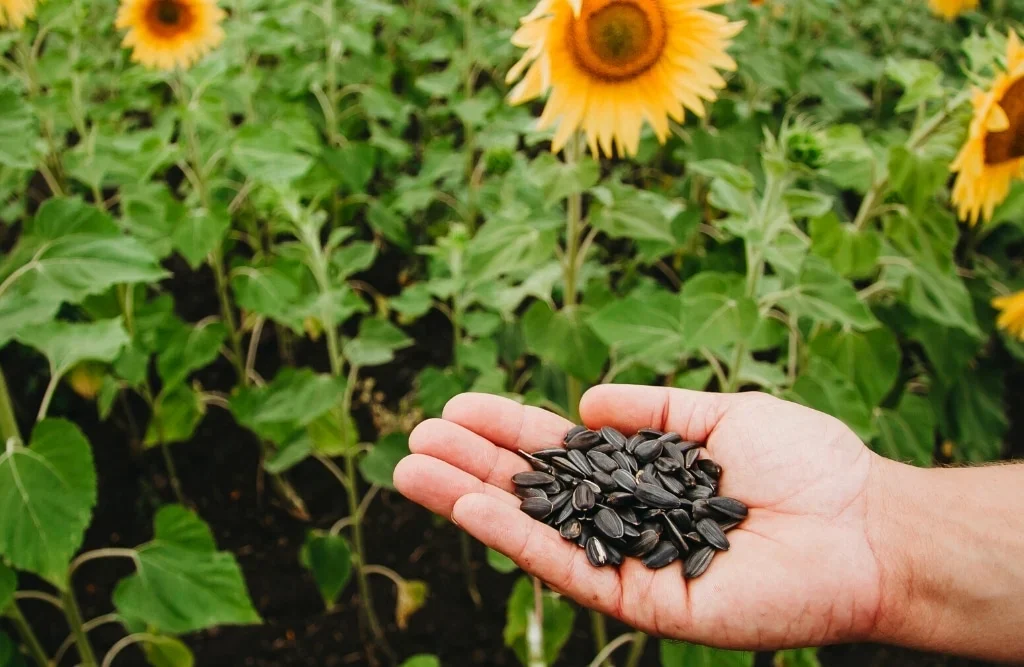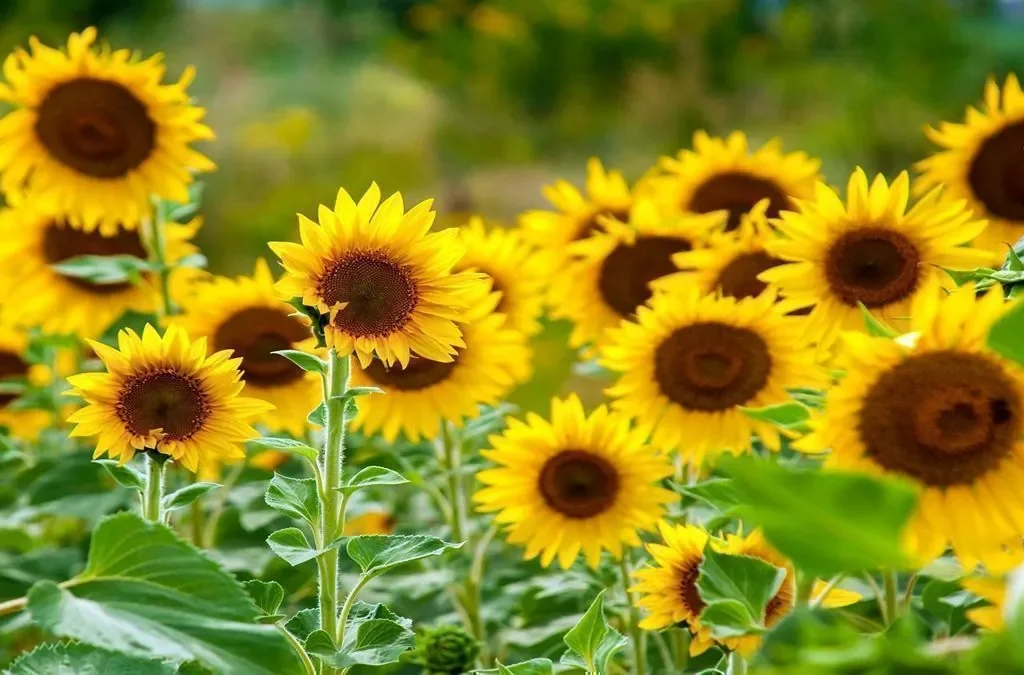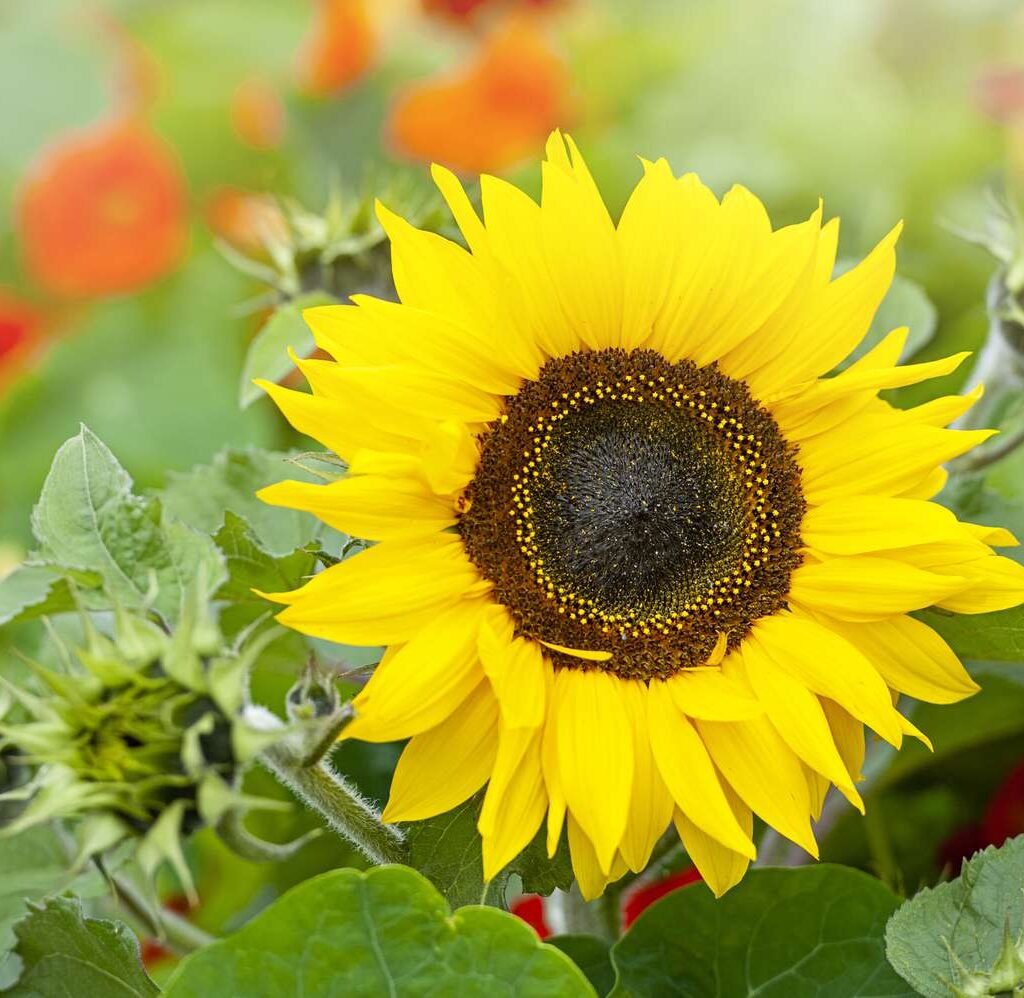Sunflowers are iconic symbols of summer, bringing a touch of sunshine and charm to any garden with their radiant golden blooms. Their tall, sturdy stalks crowned with bright yellow faces follow the sun’s path throughout the day, creating an enchanting spectacle. Beyond their ornamental value, sunflowers also provide edible seeds, attract pollinators, and serve as a cheerful backdrop in landscapes. Growing sunflowers from seeds is an enjoyable and rewarding project suitable for both beginners and seasoned gardeners.
This guide takes you step by step through the process of planting, nurturing, and harvesting sunflowers so you can enjoy these golden beauties in your own garden.
Why Grow Sunflowers?

Sunflowers (Helianthus annuus) are much more than pretty flowers. Here are some reasons to consider planting them:
- Ornamental Appeal – Their striking yellow blooms add instant vibrance and warmth to any outdoor space.
- Pollinator-Friendly – Sunflowers attract bees, butterflies, and other beneficial insects.
- Edible Seeds – Once mature, their seeds can be harvested for snacking or used for bird feed.
- Low Maintenance – They grow well in different soil types and require minimal care once established.
- Versatility – Sunflowers come in various heights and colors, including dwarf varieties perfect for small spaces.
Step 1: Choosing the Right Sunflower Variety

Before planting, decide which type of sunflower suits your garden and purpose:
- Giant Sunflowers – Can grow up to 10–15 feet tall, creating dramatic backdrops. Examples: ‘Mammoth’ and ‘Titan’.
- Dwarf Sunflowers – Compact, usually under 3 feet tall, suitable for pots and borders. Example: ‘Teddy Bear’.
- Multi-Branching Varieties – Produce multiple blooms on one plant, extending the flowering season. Example: ‘Autumn Beauty’.
- Pollen-Free Hybrids – Ideal for cut flowers as they don’t shed pollen indoors. Example: ‘Sunrich’.
Consider your available space, climate, and whether you want sunflowers for ornamental, edible, or pollinator-friendly purposes.
Step 2: Preparing the Soil
Sunflowers thrive in well-drained, fertile soil with a slightly acidic to neutral pH (6.0–7.5). Here’s how to prepare the ground:
- Choose a Sunny Location – Sunflowers need at least 6–8 hours of full sun daily.
- Loosen the Soil – Dig the soil 12–18 inches deep since sunflower roots grow long and strong.
- Amend with Compost – Mix in organic compost or well-rotted manure to improve fertility.
- Avoid Waterlogging – Ensure good drainage to prevent root rot.
Step 3: Planting Sunflower Seeds

Planting sunflower seeds directly into the ground is the easiest and most effective method.
When to Plant
- Plant sunflower seeds in spring after the last frost when soil temperatures are consistently above 55°F (13°C).
- In warm climates, succession planting every 2–3 weeks extends the bloom season.
How to Plant
- Sow seeds 1–2 inches deep in the soil.
- Space giant varieties 18–24 inches apart and dwarf types 6–12 inches apart.
- Water the area gently but thoroughly.
- Protect newly planted seeds from birds by covering with netting until sprouts appear.
Step 4: Watering and Feeding
Sunflowers are relatively drought-tolerant, but proper watering and feeding encourage robust growth and larger blooms.
- Watering:
- Keep soil moist until seedlings establish.
- Water deeply once a week for mature plants, allowing roots to grow strong.
- Avoid overwatering, which can cause fungal issues.
- Fertilization:
- Apply a balanced fertilizer (10-10-10) during early growth.
- Switch to a phosphorus-rich fertilizer before flowering to encourage vibrant blooms.
- Avoid excessive nitrogen, which promotes leafy growth at the expense of flowers.
Step 5: Caring for Growing Sunflowers

Sunflowers are hardy plants, but a little care goes a long way:
- Thinning Seedlings – Once seedlings reach 6 inches tall, thin them to prevent overcrowding.
- Staking Tall Varieties – For giant sunflowers, stake stems to prevent them from toppling in strong winds.
- Weeding – Keep the base free of weeds that compete for nutrients.
- Mulching – Apply organic mulch around plants to retain moisture and suppress weeds.
Step 6: Dealing with Pests and Diseases

Sunflowers are generally resistant but may face a few challenges:
- Common Pests:
- Aphids – Spray with insecticidal soap.
- Cutworms – Use collars around seedlings.
- Birds and Squirrels – Cover heads with mesh bags once seeds develop.
- Diseases:
- Powdery Mildew – Improve air circulation and avoid overhead watering.
- Rust and Leaf Spot – Remove affected leaves and apply fungicides if needed.
Step 7: Blooming and Harvesting
Sunflowers typically bloom 70–100 days after planting. Their golden faces brighten the garden and last several weeks.
- For Cut Flowers: Harvest stems when petals begin to open but before they fully spread. Place immediately in water.
- For Seeds: Wait until the flower heads droop, back turns yellow-brown, and seeds look plump. Cut the head, hang it upside down in a dry place, and rub seeds free once dried.
Creative Uses of Sunflowers
- Garden Backdrops – Plant tall sunflowers along fences for a natural screen.
- Pollinator Haven – Attract bees and butterflies for a thriving garden ecosystem.
- Edible Harvest – Roast seeds for snacks or use them in granola and salads.
- Children’s Garden Projects – Sunflowers are easy and fun for kids to grow.
- Bouquets and Décor – Use pollen-free sunflowers for long-lasting indoor displays.
Tips for Success
- Rotate planting locations each year to prevent soil-borne diseases.
- Plant in rows or clusters for a dramatic effect.
- Combine with companion plants like corn and beans for a diverse garden.
- Use succession planting for continuous sunflower displays all summer long.
Conclusion
Growing sunflowers from seeds is one of the most rewarding and cheerful gardening experiences. With their golden blooms towering toward the sky, they bring warmth, beauty, and life to any outdoor space. Whether you want to harvest seeds, attract pollinators, or simply enjoy their radiant charm, sunflowers are a delightful addition to every garden.
By choosing the right variety, preparing soil properly, watering wisely, and providing basic care, you can enjoy tall, healthy plants bursting with sunshine-like flowers. With this step-by-step guide, you’re ready to grow your own golden blooms and let your garden bask in their brilliance.




